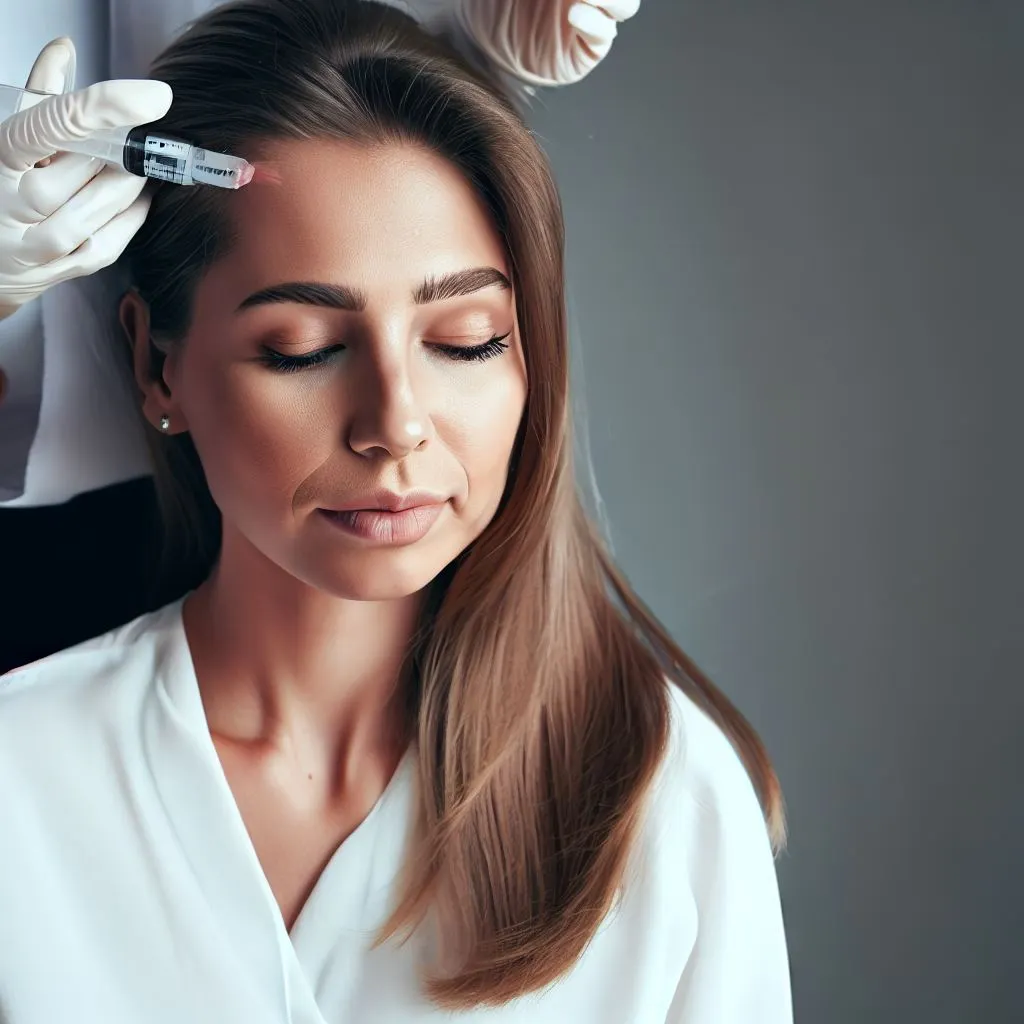
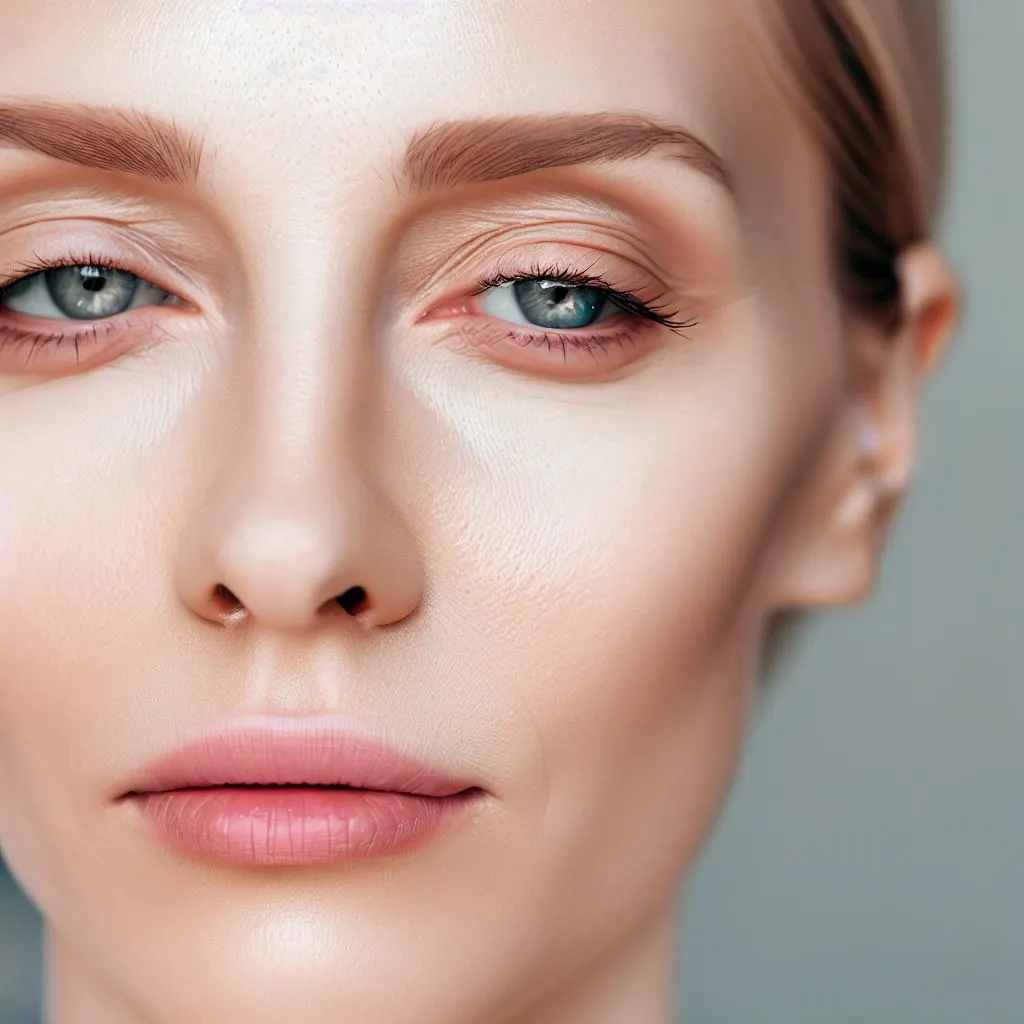
Exploring the Benefits and Procedure of Upper Blepharoplasty for Hooded Eyelids
When it comes to facial aesthetics, the eyes play a crucial role in defining one’s appearance. However, as we age, various factors can lead to changes in the eyelids, including the development of excessive upper eyelid skin. This condition, often referred to as hooded or droopy eyelids, can not only affect one’s appearance but also impair vision in some cases. Blepharoplasty surgery is a common and effective solution for addressing these concerns. In this comprehensive guide, we will discuss the causes of droopy, hooded and excessive upper eyelid skin, and we will delve into the world of blepharoplasty, exploring its different aspects, alternatives, and important considerations.
Table of Contents
- Causes of Drooping or Hooded Upper Eyelid Skin
- Addressing Drooping and Excessive Upper Eyelid Skin
- Blepharoplasty Overview
- Blepharoplasty Benefits and Goals
- Candidates for Blepharoplasty
- Blepharoplasty Consultation Process
- Blepharoplasty Cost
- Blepharoplasty Before and After Photos
- Blepharoplasty Procedure Details
- Blepharoplasty Recovery Process
- Blepharoplasty Risks and Complications
- Combining Blepharoplasty with Other Procedures
- Non-Surgical Alternatives
- Long-Term Results and Expectations
Causes of Drooping or Hooded Upper Eyelid Skin
Hooded eyelids are a common concern among individuals and they occur when an excess of skin and tissue in the upper eyelid droops over the eyelashes. This condition can be caused by various factors and often leads to both cosmetic and functional issues. Hooded eyelids, also referred to as dermatochalasis, are characterized by sagging or excess skin that folds over the natural crease of the upper eyelid. This results in a “hooded” appearance that can affect the aesthetics of the eyes.
Causes of Drooping Eyelids Include:
- Aging: The natural aging process is a primary factor contributing to drooping upper eyelid skin. Over time, the skin loses its elasticity and collagen production decreases, leading to sagging and laxity. The upper eyelids are not immune to these changes, and the skin can accumulate, resulting in a droopy appearance.
- Genetics: Genetics plays a significant role in determining how our skin ages. If your family has a history of drooping eyelids, you may be genetically predisposed to developing this condition as well.
- Sun Exposure: Prolonged and unprotected exposure to the sun’s harmful UV rays can accelerate the breakdown of collagen and elastin fibers in the skin. This can result in premature aging, including sagging of the upper eyelids.
- Lifestyle Factors: Unhealthy habits, such as smoking can contribute to premature aging of the skin. These factors can exacerbate the appearance of drooping upper eyelid skin.
- Muscle Weakening: The muscles that support the upper eyelids can weaken over time. This weakening, combined with the loss of skin elasticity, allows the upper eyelids to droop further.
- Decreased Skin Elasticity: Over time, the skin loses its elasticity due to a reduction in collagen and elastin production. This loss of elasticity can lead to sagging eyelids.
- Fat Redistribution: The fat pads around the eyes can shift or redistribute with age. Some areas may lose fat, while others may accumulate it. This redistribution can impact the appearance of the eyelids.
Addressing Drooping and Excessive Upper Eyelid Skin
It’s essential to understand that these factors can interact and vary in their impact on individuals. Some people may experience these eyelid concerns earlier or more severely than others due to a combination of genetics and lifestyle factors. Addressing these concerns typically involves a personalized approach, considering both non-surgical and surgical treatment options based on an individual’s specific needs and goals. Consulting with a qualified Dermatologistcan help determine the most appropriate course of action for addressing these eyelid issues.
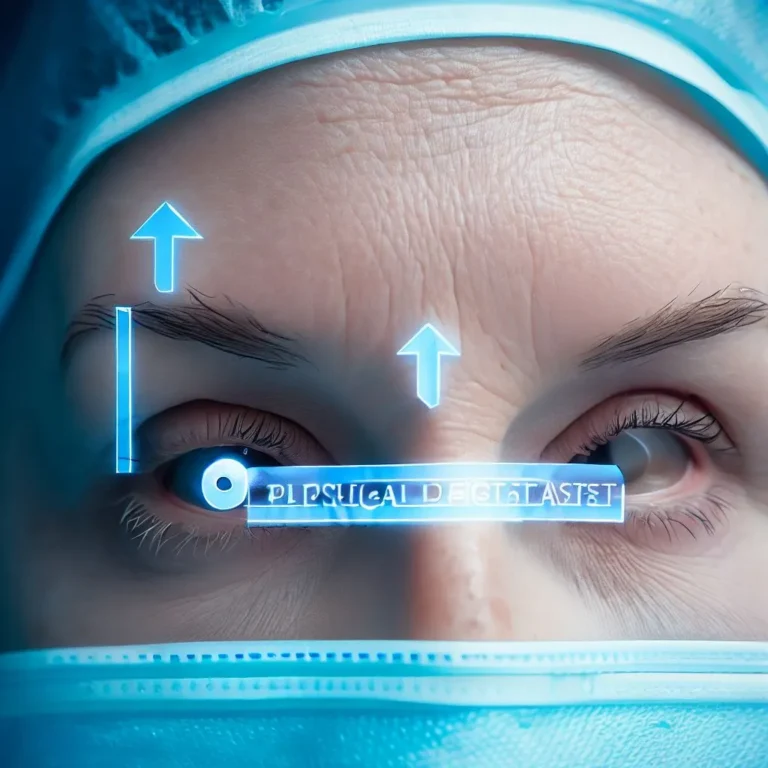
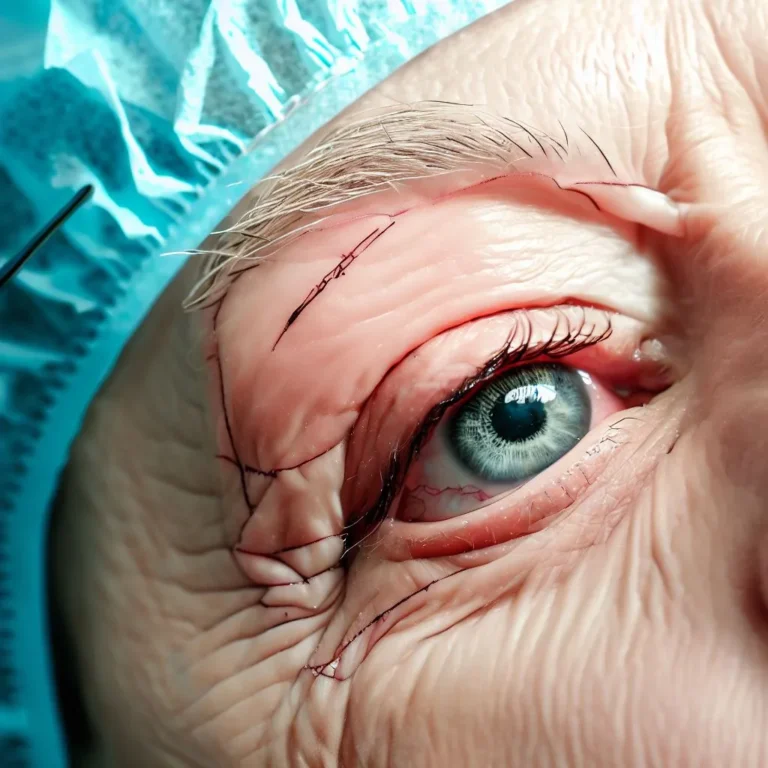
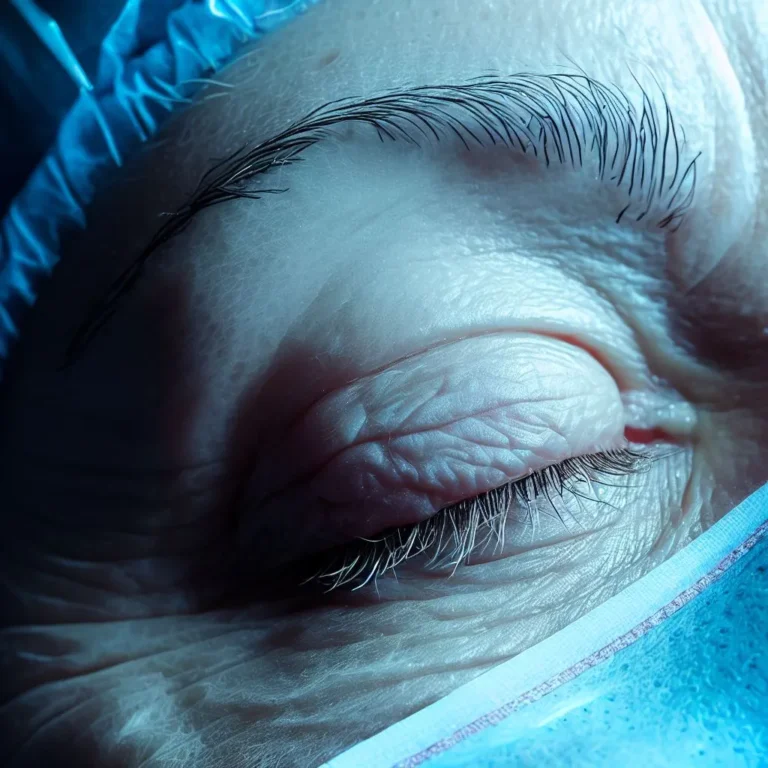
Blepharoplasty (Eyelid Surgery)
Blepharoplasty, also known as eyelid surgery, is a surgical procedure designed to address issues related to the upper and lower eyelids. This cosmetic surgery can help rejuvenate the appearance of the eyes, making them look more youthful and alert. While the procedure is often performed for cosmetic reasons, it can also have functional benefits, such as improving vision when excessive upper eyelid skin obstructs vision.Blepharoplasty, also known as eyelid surgery, is a surgical procedure designed to address issues related to the upper and lower eyelids. This cosmetic surgery can help rejuvenate the appearance of the eyes, making them look more youthful and alert. While the procedure is often performed for cosmetic reasons, it can also have functional benefits, such as improving vision when excessive upper eyelid skin obstructs vision.
Blepharoplasty can be categorized into several types, each addressing specific concerns:
- Upper Eyelid Skin-Only (or Skin Pinch) Blepharoplasty: This targets excess skin and redundant skin on the upper eyelid and is commonly used when there is only loose upper eyelid skin. This is a less invasive procedure with less downtime and fewer risks.
- Upper Eyelid Blepharoplasty: This targets excess skin, fat, and muscle on the upper eyelids, commonly addressing hooded eyelids with herniated fat pads.
- Lower Eyelid Blepharoplasty: Focusing on the lower eyelids, this procedure can correct under-eye bags, wrinkles, and puffiness.
Blepharoplasty Benefits and Goals
The goals of blepharoplasty can vary from patient to patient, but the most common objectives include:
- Reducing Puffiness: The surgery can effectively reduce puffiness, resulting in a more refreshed look.
- Youthful Appearance: Blepharoplasty can make patients appear more rested by addressing signs of aging around the eyes, such as wrinkles and sagging skin.
- Improving Aesthetics: Blepharoplasty can create a more youthful and alert appearance by reducing sagging, puffiness, and wrinkles around the eyes.
- Enhancing Vision: In cases where excessive upper eyelid skin obstructs the field of vision, blepharoplasty can significantly improve eyesight.
- Boosting Confidence: Many individuals opt for this procedure to enhance their
Candidates for Blepharoplasty
While blepharoplasty can benefit a wide range of individuals, not everyone is a suitable candidate. The ideal candidate typically:
- Is in good overall health.
- Has realistic expectations about the outcomes.
- Is bothered by excess upper eyelid skin, bags under the eyes, or related concerns.
- They may have hooded eyelids due to genetics or aging.
Blepharoplasty Consultation Process
Before undergoing blepharoplasty, patients are advised to schedule a consultation with a board-certified Dermatologist. During this consultation, the following topics will be discussed:
- Expectations: The Dermatologic Surgeon will talk to the patient about their goals and what they hope to achieve through the surgery.
- Risks and Recovery: Potential risks and the post-operative recovery process will be explained in detail.
- Customized Plan: The surgeon will create a customized treatment plan based on the patient’s needs.
- Preoperative Instructions: Patients will receive instructions on how to prepare for the surgery.
Blepharoplasty Cost
The cost of blepharoplasty varies based on several factors, including the extent of the procedure and the amount of excess eyelid skin.
Blepharoplasty Procedure Details
Understanding the surgical procedure itself is essential for prospective patients. Here is an overview of the key details:
- Anesthesia: Blepharoplasty is performed under local anesthesia..
- Incision Techniques: The Dermatologic surgeon makes carefully placed incisions along the natural creases of the eyelids to minimize visible scarring. For upper eyelid surgery, the incision typically follows the eyelid’s contour, while lower eyelid incisions may be made just below the lash line or inside the lower lid.
- Surgical Duration: The surgery’s duration varies based on the extent of the procedure. Typically, it takes one hour for the upper eyelid skin pinch..
Blepharoplasty Recovery Process
Recovery from blepharoplasty involves several stages, each with its own timeline and considerations:
- Immediate Postoperative Period: Patients can expect some swelling, bruising, and discomfort, which gradually subside over the following days.
- Stitches Removal: Typically removed within the first week.
- Resuming Normal Activities: Patients can usually return to work and most daily activities within a week to ten days, but strenuous exercise should be avoided for a few weeks.
- Long-Term Healing: The final results of blepharoplasty become more apparent as the eyes heal over several weeks to months.
Blepharoplasty Risks and Complications
Like any surgical procedure, blepharoplasty carries certain risks and potential complications, including:
- Infection: Although rare, infections can occur after surgery.
- Scarring: While efforts are made to minimize visible scarring, some scarring may be present, especially during the initial healing phase.
- Dry Eyes: Temporary dryness or changes in tear production can occur but are usually temporary.
- It’s crucial for patients to be aware of these potential issues and discuss them with their Dermatologic surgeon during the consultation.
Combination Procedures
In some cases, patients may opt for additional cosmetic procedures in conjunction with blepharoplasty to achieve a more comprehensive facial rejuvenation. Common combination procedures include:
- Botox and Dermal Fillers: These non-surgical treatments can complement the results of blepharoplasty by targeting fine lines and wrinkles.
- Laser: To tighten the skin around the eyes.
- PRP Eye flood: To improve crepey skin under the eyes.
Non-Surgical Alternatives
For those who prefer non-invasive options or want to delay surgery, several non-surgical treatments can help rejuvenate the eye area:
- Botox: To temporarily lift the brow.
- Dermal Fillers: These injectables can camouflage under eye bags.
- Laser Treatments: Fractional laser therapy can improve skin texture and tighten loose skin.
Long-Term Results
The results of blepharoplasty are long-lasting (approximately 10 years), but they are not entirely permanent. Over time, some aging effects may reappear, though they will typically be less severe than before the surgery. Patients can maintain their results by adopting a healthy lifestyle, including sun protection and proper skincare.
Setting realistic expectations is crucial for a satisfactory outcome. While blepharoplasty can produce dramatic improvements, it may not completely erase all signs of aging or achieve perfection.
Lifestyle Changes
Maintaining the results of blepharoplasty involves making certain lifestyle adjustments. Here are some tips to help preserve your rejuvenated appearance:
- Sun Protection: Protect your eyes from harmful UV rays by wearing sunglasses and using sunscreen.
- Skincare: Adopt a skincare routine that includes gentle cleansing, moisturizing, and the use of products recommended by your Dermatologic surgeon.
Conclusion
In conclusion, blepharoplasty is a highly effective solution for addressing excessive upper eyelid skin and achieving a more youthful and refreshed appearance. It offers both aesthetic and functional benefits, improving not only how individuals look but also how they see the world. Consulting with a qualified and experienced Dermatologistis essential to determine the most appropriate approach for addressing these issues and achieving the desired results. Whether through surgical intervention or non-surgical treatments, regaining a more youthful and rejuvenated look is within reach for those affected by these concerns.
Don’t let hooded or droopy eyelids hinder your confidence—explore the possibilities of blepharoplasty and discover a brighter, more youthful appearance.
Recent Dermatology Blog Posts


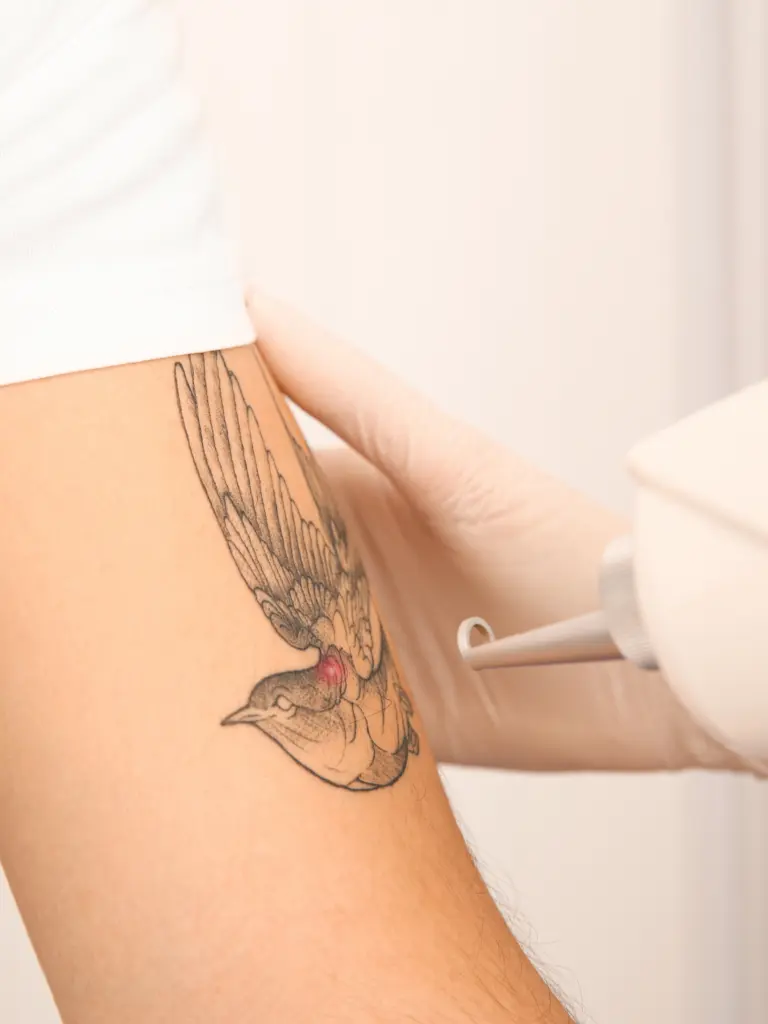
Do you have any questions about Upper Blepharoplasty
At FCP Dermatology we offer a wide range of surgical and cosmetic Dermatology services, in a 5-star luxury setting.
- +1 (416) 861-8600
- Contact via Email
Additional Treatments
Hyaluronic Acid Dermal Fillers
Skin Boosters
Radiesse
Sculptra
Belkyra Deoxycholic Acid
PRP Under eye treatment
View All Available Treatments
© 2022 All rights reserved
MADE BY CLIXOLOGY INC